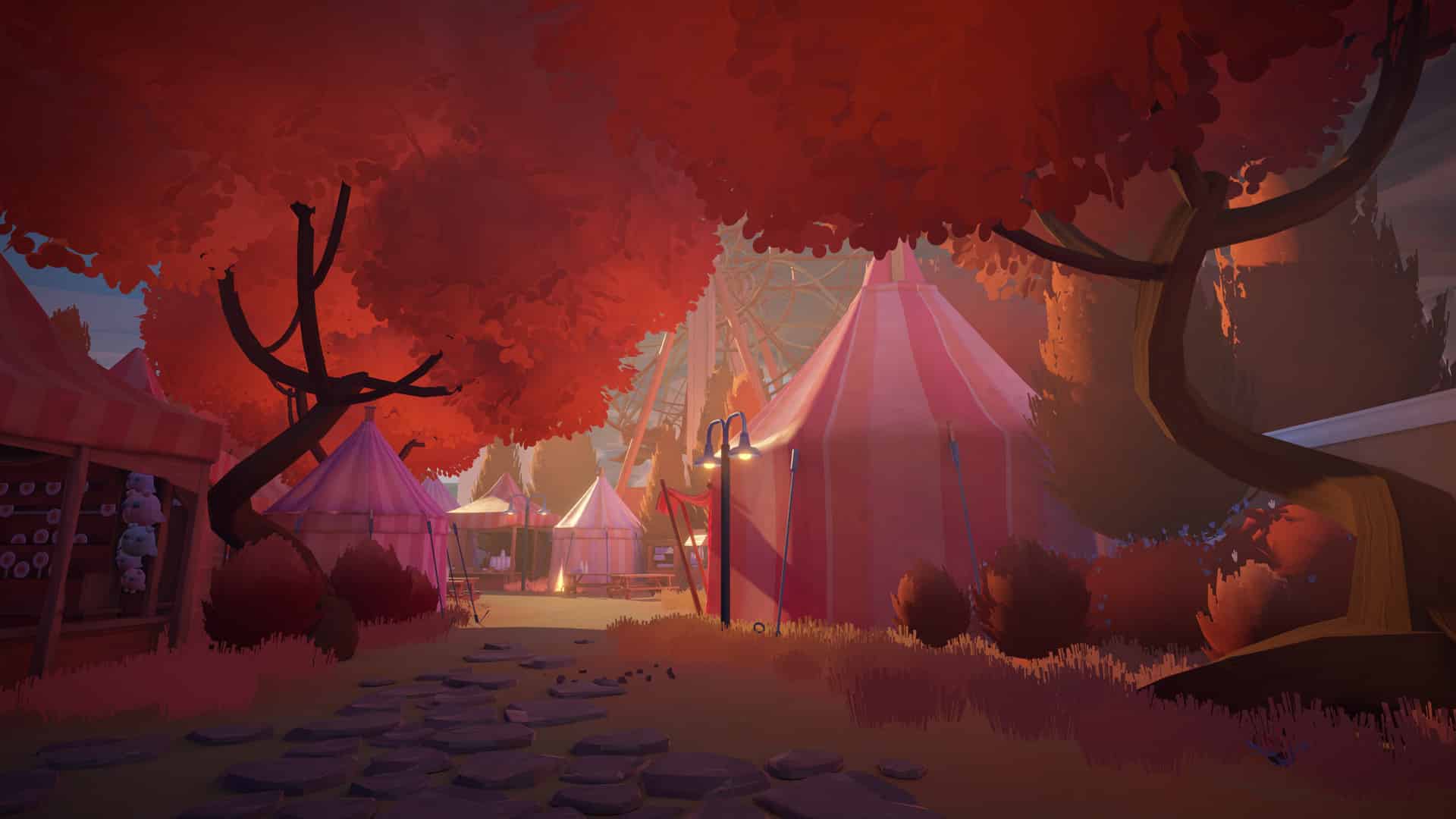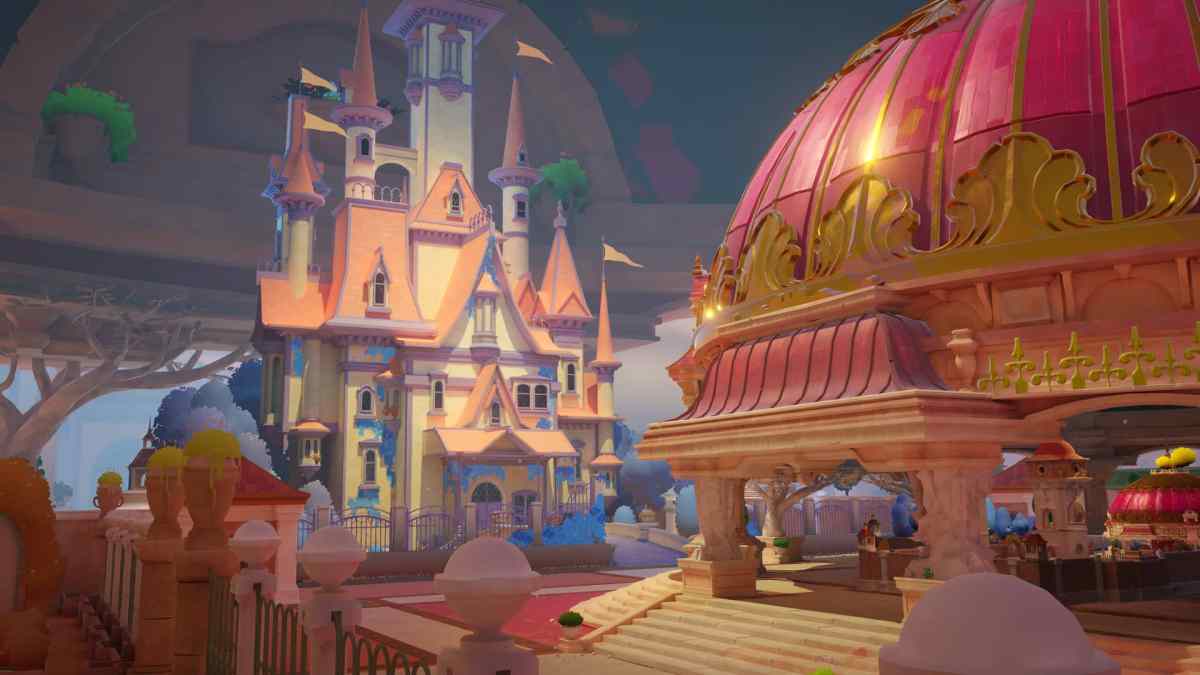This article contains some story spoilers for Graceful Decay and Annapurna Interactive’s Maquette.
The first time I got to play around with Maquette’s core mechanic, I was left with the same kind of awe I had several console generations ago when I first rewound time in Braid. In 2008 on the Xbox 360, having the ability to simply scroll back a few seconds to the moment before I decided to foolishly jump into a pit of spikes felt like an absolute revolution. It was that same sense of awe I felt the first time I successfully created an entry and exit in Portal. I felt that similar spark of creativity and potential in Maquette.
Honestly, your best bet to fully understand what’s at play here is to watch a trailer. You manipulate objects in a small-scale model (known as a maquette) of the world you’re currently inhabiting, which in turn manipulates them in the larger world around you. For instance, if you plop a regular-sized key down across a small gap in the model, a massive key will fall from the sky in the real world, creating a bridge for that very same gap. Or perhaps there’s a switch that’s located on an out-of-reach platform in the real world. If you walk over to the maquette and find the smaller version of that switch on the model, you can simply reach over and flick it on here. In Maquette, you’re asked to think quite literally outside the box.
The core mechanical idea for Maquette was first shown off at the 2011 Game Developers Conference’s Experimental Gameplay Workshop. In the decade since, we’ve seen games like Antichamber, Superliminal, and Manifold Garden come along that play with the idea of perspective in a first-person puzzle space. However, while this core idea of a recursive world would’ve been more than enough to create a satisfying puzzle experience, the true magic in Maquette comes from how these unique mechanics are paired with an excellently written and acted story of a couple meeting, falling in love, and ultimately breaking up. And the way those mechanics morph and evolve based on where you are in the arc of the relationship is really satisfying.
Maquette certainly isn’t the first puzzle video game framed around the arc of a relationship. 2018’s Florence, also published by Annapurna Interactive, used simple and tactile touchscreen interactions to create a bond between you and the titular Florence as she made her way through every step of a relationship that ultimately didn’t end well. And while obtuse, the aforementioned Braid told a story of love and loss that was paired extremely well with its mechanics. No matter how much your character was able to manipulate the flow of time, he couldn’t fix the most important mistakes he made, which ultimately hurt those he loved most. A done bun can’t be undone.
Maquette feels like a happy medium between Florence and Braid. The story of Michael and Kenzie’s relationship is very much grounded in reality. Actors Seth Gabel and Bryce Dallas Howard bring a genuine energy to each character, making you fully believe in everything from the meet-cute in a busy cafe, to the honeymoon period across San Francisco, to the eventual darker times. And again, all of this is woven in with the puzzles themselves to create an experience that really gels together.
The first-person perspective in puzzle games is uniquely designed to allow us to cock our heads, squint our eyes, and try to see the obstacles in front of us from every angle imaginable. In the same way that one of the fights Michael and Kenzie have is about the difference between listening to someone and genuinely hearing what they’re saying, Maquette asks you to not just look at a puzzle, but to really see it from every angle imaginable. You have all the clues and all the rules of this world right from the get-go, so nothing is out of reach. When I occasionally found myself stuck at a particularly tricky puzzle, finally figuring out the answer always resulted in me slapping my palm against my forehead for not looking at the world in the right way sooner. Hindsight is 20/20, in nearly every aspect of life.

Some of my favorite first-person puzzle games in recent years, like The Witness, Return of the Obra Dinn, and Outer Wilds all reward players for their curiosity, patience, and keen observation. And of course, Portal remains the high water mark when it comes to this. While Maquette does this as well, I would’ve liked to see a bit more freedom in how I went about solving any given puzzle. It felt like there was always one, and only one, solution, and the key was figuring out exactly what the game wanted from you, whereas the aforementioned handful of modern classics gave you more freedom to express yourself. At times, Maquette can feel rigid in its mechanics, where those other games feel elastic.
Regardless, there’s one unforgettable scene in Maquette that hit particularly close to home for me. Michael and Kenzie’s relationship unfolds in San Francisco, with mentions of different neighborhoods and landmarks that were entwined with their love. But it isn’t until about three quarters through the game that the city really steps to the forefront, and it presents itself in a way that where we’re living at given crossroads in our life can be forever linked to the events themselves.
After a particularly horrendous fight, Michael leaves the flat he shares with Kenzie and just begins to walk through the Mission District of the city. Simultaneously, you as the player begin to wander through the winding streets of a neighborhood lined with Victorian homes that seem to sprout up from the ground with each step. Michael keeps pressing on, wanting to get lost in his city to avoid having to come to terms with the fact that things won’t ever be the same after this. As we continue to get lost in the twisting labyrinth of homes, the MUNI power lines above begin to sharpen and close in like a spider’s web. Michael knows it’s the end, but he presses on into the night regardless.

A lot of us can relate to the sort of fight that Michael and Kenzie got in that led to the mutual realization that things weren’t going to work out. However, I’ve experienced this exact same moment while living in the exact same neighborhood, and I went on that exact same walk through streets lined with Victorian houses and got lost as the spiderweb power lines closed in around me. Playing through this scene was among the most personally relatable moments I’ve ever experienced in a video game. Maquette again reiterates that a done bun can’t be undone.
Despite how powerful this moment was, I really appreciate that Maquette doesn’t end the relationship on a bitter or resentful note. Instead, it treats the time Michael and Kenzie spent together as a crucial learning experience for both of them that ultimately made them better people in the end. The heartbreak and grief we all feel can eventually morph into acceptance, assuming that we allow it to. Like a maquette itself, the time they spent together was a rough draft for what they’ll eventually find down the road.
Maquette launches March 2 on PC, PlayStation 4, and PlayStation 5. It will be available as part of PS Plus exclusively on PlayStation 5.






Published: Mar 1, 2021 12:00 pm